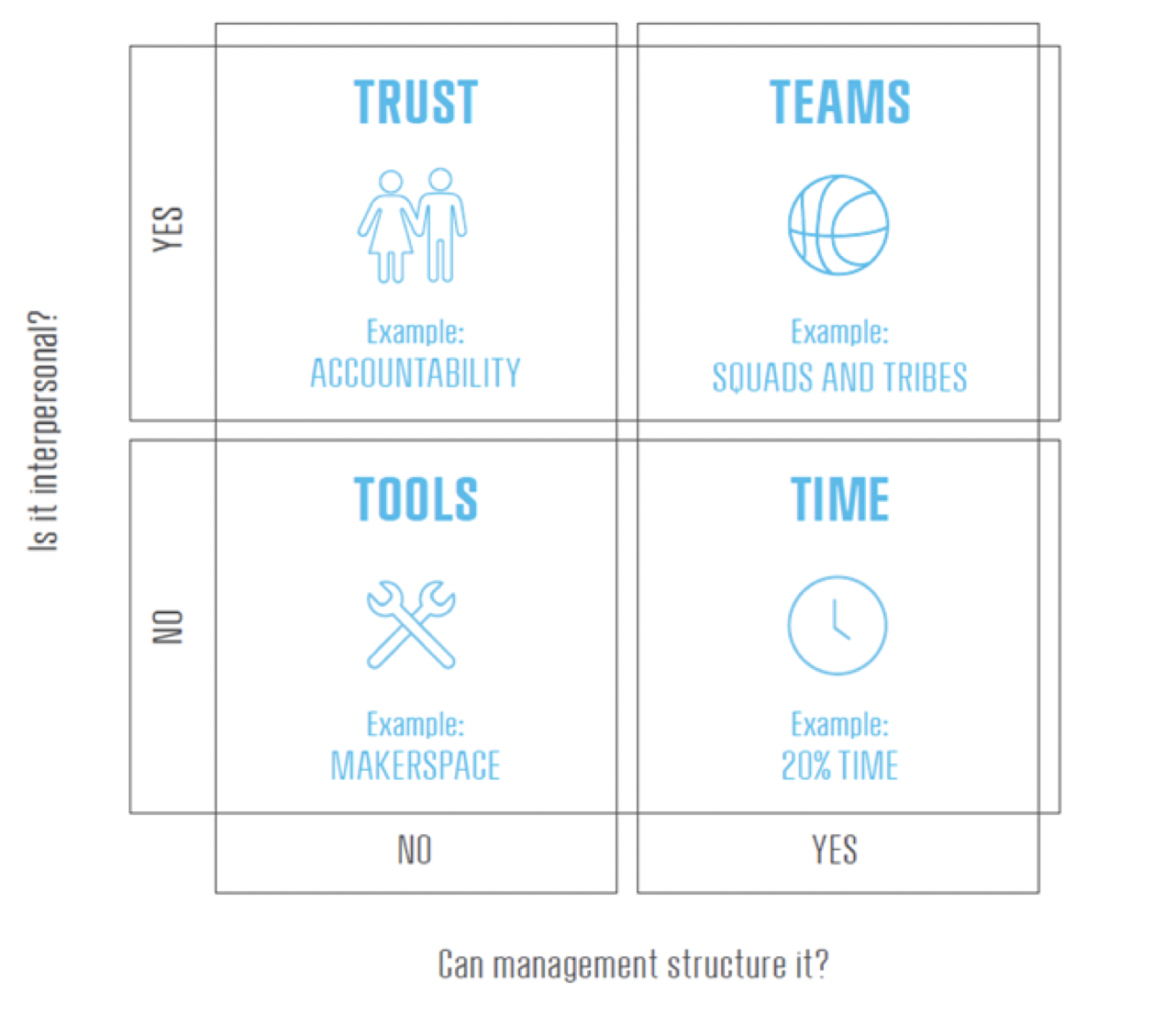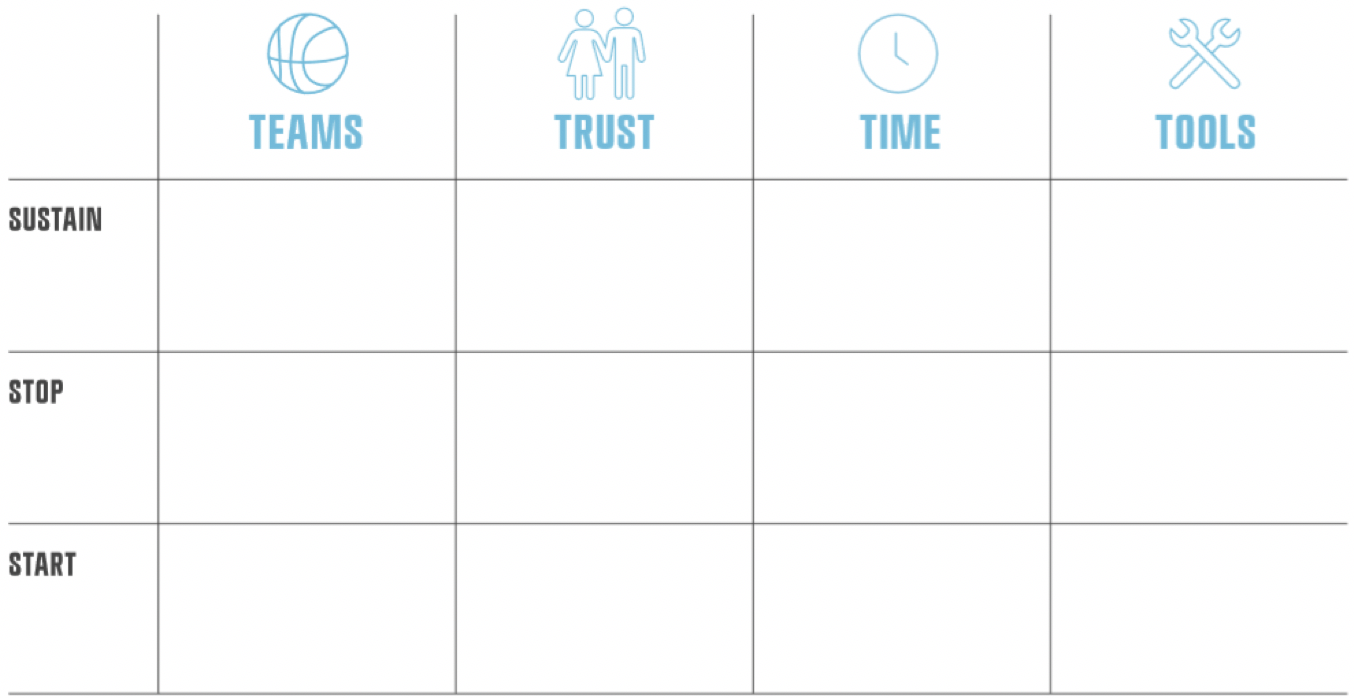California Management Review
California Management Review is a premier academic management journal published at UC Berkeley
by Carsten Lund Pedersen

Many executives operating in today’s increasingly dynamic and digital context want to empower their employees. Yet most executives lack knowledge about how best to do so – which is becoming increasingly problematic, as the Covid-19 pandemic has forced companies to work in a decentralized manner. Part of the problem originates from the flawed perception that autonomous employees do not need management.
Paradoxically, I’ve found that empowering employees often require more, not less, management – but it often comes in a different form: My research on employee autonomy suggests that there are four key dimensions – the 4 Ts – that managers can utilize to fuel autonomous efforts in their organizations.
To help executives better manage autonomous employees (particularly during the current pandemic), I’ve therefore developed the framework shown below, which presents the research-based findings of the most important elements in fostering employee autonomy.

The elements entailed in the model are as follows:
Working with autonomy therefore becomes a form of quadrathlon, where you will need to be great in four different disciplines. Only being skilled in one of the elements won’t suffice. Below I elaborate on the elements.
Teams: One important aspect of fostering employee autonomy that can be directly initiated by top management is the introduction of teamwork in smaller groups and a mandate to make decisions on focal projects. By structuring project work around different types of teams with decentralized decision authority, managers can: (i) provide employees on teams with a mandate to make important decisions and (ii) build a local form of governance that will ensure agility. Examples of appropriate teamwork includes Spotify’s matrix organization of squads and tribes as well as Jeff Bezos’ famous ‘2 pizza rule’ at Amazon, where team size is to be small enough to be fed with two pizzas. During the Corona pandemic, it has also been seen how companies built around decentralized teams, such as Haier Group, have been more resilient to the crisis.
Trust: Executives cannot order their employees to trust them – which partly explains why they have such difficulty in managing it. Autonomy cannot be initiated if there is no trust between management and employees. Trust is related to autonomy, as managers who foster autonomy signal to their employees that they trust their judgments and that they believe they will act in the best interests of the organization. Similarly, employees who accept the call to be autonomous convey not only that they trust their managers but also that they trust they will not be unnecessarily reprimanded if acting on their own leads to failure, although they will (and should) be held accountable for the outcomes of their autonomy. During Covid-19, we’ve seen how many workplaces have been forced to trust their employees in working from home – and in most cases, employees have risen to the occasion, earning future trust in their autonomy. We’ve seen examples from Facebook and Twitter that convey this trust by stating that their employees can in principle work from home as long as they want.
Time: If you merely tell your autonomous teams that you trust them and that they should make decisions on their own, will they then act on that instruction? Not necessarily. One thing that determines (and controls) the actions of employees is the amount of time they have available. For instance, if employees are busy with day-to-day operational tasks and project work, chances are that they will not have time to pursue pet projects on their own. One thing that can be done is to allocate time for employees to work on their own pet projects. Google have become famous with their so-called 20% time, where employees are free to work on projects of their choosing for 20% of their time. During the Covid-19 pandemic, many people have similarly experienced more time being freed up to make autonomous decisions.
Tools: Employees may have great ideas for your organization’s next big app, but little autonomous innovation will come about if they do not have the information, software and resources they need to develop the app. In other words, employees need tools to help them be autonomous. These tools may be available in the form of “makerspaces”– collaborative work spaces in which tools such as 3D printers, laser cutters, databases, and a wide range of knowledge are made available to allow for something to be built. During Covid-19, many tools have gained attraction as means for decentralized coordination, such as Zoom, Teams and Hangouts.
For each of these elements, executives should write down one thing they currently do that they believe should be continued, one thing that they should stop doing, and one thing that they should start doing. We can now combine these elements in a matrix (see below).

The above matrix not only provides a framework to collect the experiences obtained during the pandemic, it also provides you with a 12-step action plan for better empowering your employees – also after the pandemic ends.
Today’s employees demand to be empowered – and this demand is only becoming more relevant because of the pandemic. Yet, employees can only be empowered, if you manage the process correctly – one T at a time.